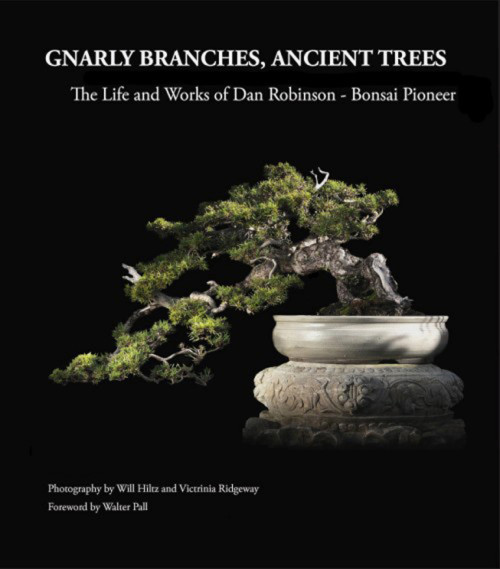Picasso's (aka Dan Robinson's) now famous wild and wonderful Hinoki. It's from Will Hiltz' most excellent book, Gnarly Branches, Ancient Trees, about Dan's life and work. BTW, it's just back in print and available at Stone Lantern.
Back from the west coast very late last night and swamped with catch up so, we’ll borrow from our vast archival store once again. This one originally appeared July 4th, 2013. Independence Day. It seems appropriate for our post Artisans Cup recovery period as some of the trees are by artists who displayed at the Cup and one is by Ryan Neil himself.
Because the original text was about Independence Day and on the silly side, I’m going to dispense with it and go right to the photos.
Might as well feature another Hinoki while we're at it, though this one is certainly a contrast in types with the one above. World-class Hinoki aren't very common, but this muscle-bound powerhouse by Suthin Sukosolvisit certainly rates. If you know Suthin, you know that he is famous for his Shohin bonsai, but judging by this tree and many others, he should be famous for bonsai, period. Here's the original Bark post.
Michael Hagedorn reworked this magnificent collected Sierra juniper (grafted with Shimpaku) in a half-day refinement session at the Pacific Bonsai Museum, way back in 2009. BTW: Michael's Crataegus Bonsai blog is one of our all-time favorites (for his knowledge, his bonsai, and his writing). Here's the original Bark post (including the before photo).
While we're in the Northwest, we might as well stay there long enough to feature a Ryan Neil bonsai. In this case, the photo is not so great, but the tree is. It's a collected Lodgepole pine. Here's the original Bark post.
This wildly expressive Wisteria is from Bill Valavanis‘ great book Classical Bonsai Art (out of print). It belongs to Robert Blankfield, who originally styled it at a workshop with Bill. Here's the original Bark post.
Let's stick with Bill for a minute (the tree is not his, but the exhibition and the book are his doing). This one's a Nia buxifolia that belongs to Michael Sullivan of Florida. It won the Finest Tropical Bonsai at the 2012 U.S. National Bonsai Exhibition. Here's the original Bark post.
Nick 'Larch Master' Lenz has collected and styled so many great Larches that it's easy to overlook the fact that he also has collected and styled so many great trees that aren't larches. This distinctive humpbacked apple is a pretty good example of one of those other trees. It's from his Bonsai from the Wild, the ultimate book on collecting, especially collecting here in the U.S. Here's the original Bark post.
Time for an immigrant. This worthy old Korean yew (Taxus cuspidata, usually called Japanese yew) was donated to the Pacific Bonsai Museum by Mr. Su Hyung Yoo of Korea. It's one of 248 fine bonsai that are featured in the 3rd U.S. National Bonsai Exhibition Album and in my opinion, one of the best. Here's the original Bark post.
This rare beauty is the other immigrant. It’s a
NikkoNyohozan Satsuki Azalea that belongs to The Kennett Collection. It originally belonged to Kunio Kobayashi of Japan, one of the world's most renowned bonsai artists. Like many of the other trees in this post, it's featured in the 3rd U.S. National Bonsai Exhibition Album. Here's the original Bark post.
This sweet California native is the tree that graced the cover of the very last issue of Bonsai Today (issue 108). It's a Sierra juniper that belongs to Boon Manakitivipart one of North America’s most influential bonsai artists and teachers. Here's the original Bark post.
Sheer power displayed by another California native. This photo of a now famous California juniper (Juniperus californica) is originally from a chapter by Ernie Kuo in our Masters’ Series Juniper Bonsai book (back in print in November, 2015) that’s titled ‘Two Studies.’ Here's the original Bark post.

Gnarly Branches, Ancient Trees. An indisputably wild and wonderful bonsai book, full of inspiration for anyone who loves bonsai.
The Azalea that is in this post is not a Nikko, it is a Nyohozan.
Thanks Mike,
I knew that. Just forgot and picked up the old mistake from the earlier post.